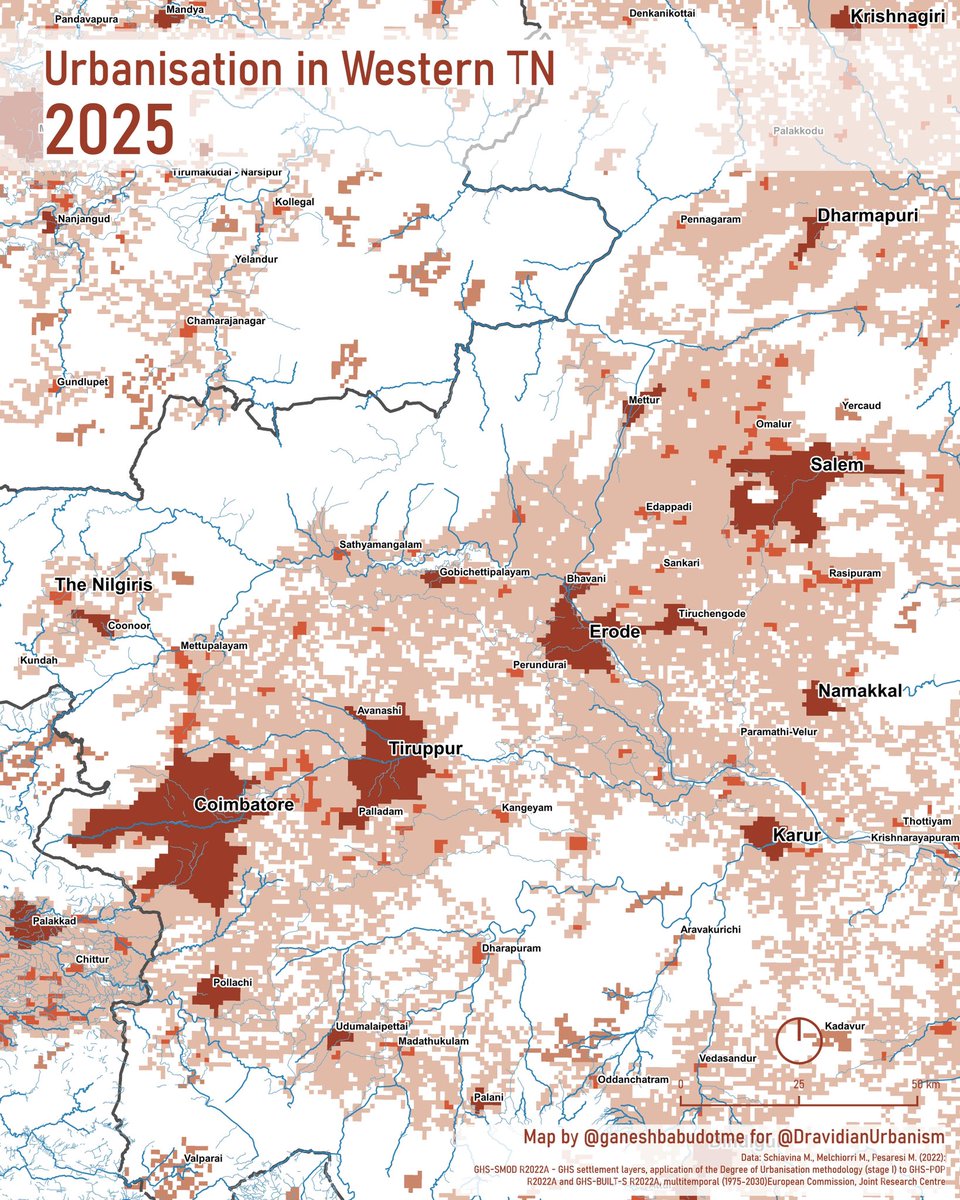
For the second part of the four part series of spatial zoom ins on the trends of urbanisation in Tamil Nadu, we look into western TN.
The dynamics of urbanisation outside of Chennai's sphere of influence is seldom discussed in popular discourse. That makes the next 3 zoom ins that much more interesting to start a dialogue on the regional dynamics of urbanisation in the state. 







Western Tamil Nadu has urbanised rapidly in the last 15 years as seen evidently from the maps. The region already had a strong textile processing and manufacturing industry which has matured considerably in the recent years. 







The economy of the region is also diversifying recently as Coimbatore emerged as the second largest software exporter in the state. The role of private entrepreneurs in the urbanisation story of this region would be an interesting story to elucidate too. 







The region of western TN has emerged organically as a polycentric regional urban structure, which could be strengthened through dedicated infrastructural investments. High speed rail connecting the urban cores or even BLR. Integrated logistics corridors.. the possibilities are ♾ 

This is also an environmentally sensitive region as it traverses the western/eastern ghats. Urbanisation has put a lot of pressure on this region as the land has been transformed by human influence. 







A case for a cohesive regional vision becomes all the more important because of this.
#planning #urbanism #tamilnadu #india #coimbatore #salem #erode #tiruppur #maps
#planning #urbanism #tamilnadu #india #coimbatore #salem #erode #tiruppur #maps

• • •
Missing some Tweet in this thread? You can try to
force a refresh












